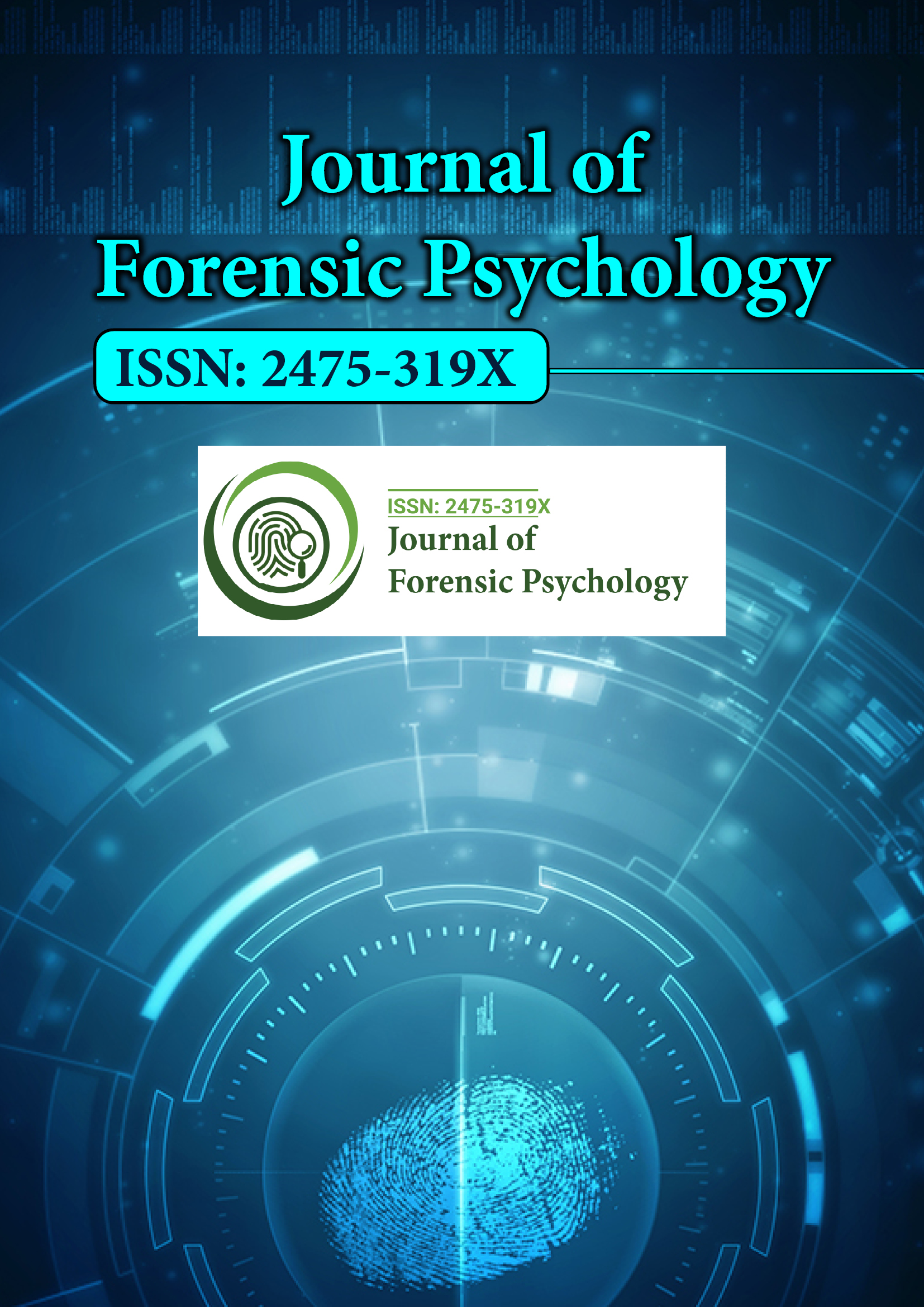Indexed In
- RefSeek
- Hamdard University
- EBSCO A-Z
- Publons
- Geneva Foundation for Medical Education and Research
- Euro Pub
- Google Scholar
Useful Links
Share This Page
Journal Flyer

Open Access Journals
- Agri and Aquaculture
- Biochemistry
- Bioinformatics & Systems Biology
- Business & Management
- Chemistry
- Clinical Sciences
- Engineering
- Food & Nutrition
- General Science
- Genetics & Molecular Biology
- Immunology & Microbiology
- Medical Sciences
- Neuroscience & Psychology
- Nursing & Health Care
- Pharmaceutical Sciences
Opinion Article - (2023) Volume 8, Issue 1
Various Perceptions on Antisocial Personality Disorders
Kaya Atmaca*Received: 01-Feb-2023, Manuscript No. JFPY-23-20036; Editor assigned: 03-Feb-2023, Pre QC No. JFPY-23-20036 (PQ); Reviewed: 17-Feb-2023, QC No. JFPY-23-20036; Revised: 24-Feb-2023, Manuscript No. JFPY-23-20036 (R); Published: 03-Mar-2023, DOI: 10.35248/2475-319X.23.8.272
Description
Repeatedly breaking the law, acting irresponsibly in social situations, and showing a general disregard for other people's rights are the main components of antisocial personality disorder. Early in adolescence, before the age of 15, antisocial conduct begins. These people are morally bankrupt and lack any sense of regret since they care so little about the rights and feelings of other people. Some people appear to be completely incapable of empathizing with other people's emotions, and they lack compassion. They can appear to be light-heartedly amusing and interesting, yet behind the surface there are people who engage in criminal activities, dishonesty, promiscuity, drug usage, and violent behaviour. Antisocial personality disorder is the personality disease because those who have it are so indifferent to how their actions influence other people. Antisocial conduct, impulse control problems, other cluster B personality disorders, mania, substance abuse disorders and psychosis, mental retardation, and personality changes brought on by general medical diseases are all included in the many analyses for antisocial personality disorder. Individuals with marginal personality disorder may engage in unlawful activity, but they also frequently exhibit parasuicidal behaviours, repeated suicide thoughts, deep feelings of emotion, and self-loathing. Since narcissistic personality disorder is linked to "white collar crime," whereas antisocial personality disorder is linked to "blue collar crime," people with this disorder are compelled to break the law for no other reason than to maintain their sense of entitlement. Because of patients with antisocial personalities might also have co-morbid bipolar disorders, it can be difficult to distinguish between bipolar mania and antisocial personality disorder. The majority of bipolar illness individuals, however, do not have severe conduct issues from their early years, and their antisocial behaviour is typically confined to manic periods. Criminal behaviour can anticipated from psychotic patients as well, although this behaviour is typically a reaction to hallucinations or delusions. Nonetheless, drug use and acquisition are typically the focal points of criminal actions connected to substance abuse disorders. The prevalence of antisocial personality disorder is 3% in men and less than 1% in women. Since that this personality disorder has a reputation for being associated with unlawful conduct, it is not surprising that at least 75% of inmates have the diagnosis. Before the age of 15, patients with this illness begin to exhibit conduct problems, and they typically experience cooccurring attention deficit or hyperactivity disorders, polysubstance disorders, and somatization disorders. Although the specific cause of this disorder is unknown, first-degree relatives of men with the disorder experience it five times more frequently. A middle-aged person may have some development despite the unpredictable nature of the disorder's typical past. There are many different antisocial behaviours among kids and teenagers. As young people transition into late adolescence and adulthood, antisocial behaviours become less common, according to the developmental changes occurring during adolescence. Yet, some individuals display significant and persistent behavioural issues that are associated with a higher degree of functional loss. A significant amount of study literature has been devoted recently to categorising homogeneous subcategories of kids and teens with antisocial behaviours in order to better understand the accepted course of symptoms and, ultimately, to enhance the quality of care. A poor prognosis is predicted by the early onset of antisocial behaviours and a lack of prosocial feeling, according to accumulated scientific research. The pathways of antisocial behaviours are influenced by additional factors such as cognitive traits and psychiatric disorders. Environmental and genetic interactions are also thought to have a role in how these issues develop. It is critical to have a better understanding of the processes leading to antisocial conduct as well as improved CD patient care. Aggression and antisocial behaviour are common characteristics of many debilitating and pervasive psychiatric diseases. Detections of Conduct Disorder (CD), Oppositional Defiant Disorder, and Antisocial Personality Disorder in adults are among them. Increased aggressive behaviour has been linked to deficiencies in SIP, including response production, hostile attribution biases, goal selection, and cue detection. Several scholars have investigated how these impairments differ from other forms of violence, such as reactive and proactive aggression.
Citation: Atmaca K (2023) Various Perceptions on Antisocial Personality Disorders. J Foren Psy. 8:272.
Copyright: © 2023 Atmaca K. This is an open-access article distributed under the terms of the Creative Commons Attribution License, which permits unrestricted use, distribution, and reproduction in any medium, provided the original author and source are credited.

